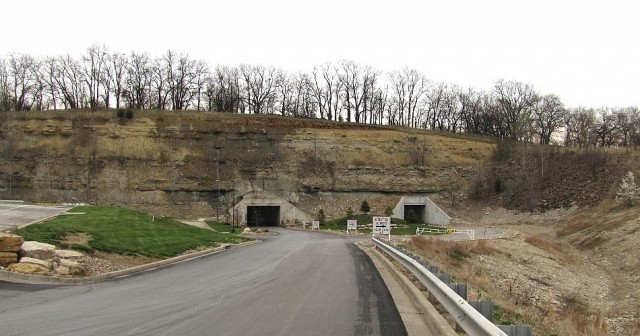
How and where do federal agencies keep their vast amounts of records? The Code of Federal Regulations authorizes the National Archives and Records Administration (NARA) to establish, maintain and operate records centers for federal agencies; it also empowers it to approve records centers that are maintained and operated by individual agencies. In addition, NARA can promulgate standards, procedures and guidelines to federal agencies with respect to the storage of their records in commercial records storage facilities. Since 1950, NARA’s Federal Records Centers (FRC) program has safeguarded the federal government’s records, including tax returns, official military records, blueprints of federal buildings and other structures, passport applications, inmate files on federal prisoners, maps of national parks and much more.
The FRC maintains facilities that protect records from fire, theft, pests, water damage and natural disasters. It provides high-quality, cost-effective storage and servicing of records for federal agencies and is developing state-of-the-art technology to ensure that it will be able to continue to serve these agencies’ needs for electronic records management in the digital era. It stores about 27 million cubic feet of records in 17 facilities nationwide. (If the boxes stored in FRCs could be stacked atop each other in a single column, they would be taller than 900 Mount Everests.) Approximately 1,100 federal employees work for the FRC, serving nearly 400 federal agencies. Since 1999, the FRC program has operated on a fee-for-service basis; it is now supported entirely by the fees it charges other agencies.
Some of the FRC’s most interesting facilities are located 80 feet underground, in retrofitted limestone mines. The Lee’s Summit, Mo., and Lenexa, Kan., FRCs feature cost-effective climate control, enabling them to store records at the proper temperature and humidity much less expensively than an above-ground facility. The Lenexa FRC houses a custom-built cold storage vault that stores film for the National Archives; its collection includes images from the nation’s first successful satellite reconnaissance system as well as combat films.
As more and more government records are created and stored in electronic form, FRCs are responding to the need to manage those electronic records by developing new facilities and services. In 2007, NARA opened two state-of-the-art electronic records vaults at the FRCs in Suitland, Md., and Fort Worth, Texas, both of which incorporate a non-aqueous fire suppression system, strict environmental controls and multiple levels of security. The FRC also has developed the Archives and Records Centers Information System (ARCIS), the online portal through which NARA’s customer agencies now do business with FRCs.
